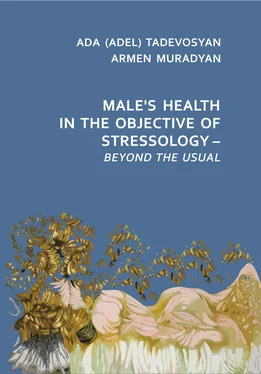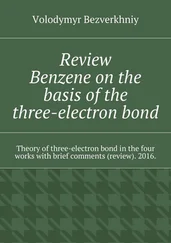1. The neurophysiological part includes: HNA with the brain in the center, sensorium, mirror neurons, the mechanism of eidetism, memory, endocrine glands, the conductor system, skin, organ systems, body.
2. The psychoanalytic part of the model includes: psychosensory reflection (sensations, feelings, pain), mechanisms of psychological defense, flashbacks, dreams, amnesias, conversions.
The inclusive concept by Hartmann (2002) regards the adaptation as a nonstop ongoing process that has its roots in the biological structure, with many of its manifestations reflecting the constant attempts of “Ego” to balance the internal or inter-systemic tension. According to A. R. Luria, if the initially developing mental activity has a relatively elementary basis while depending upon a “basal” function, it will subsequently become more complicated starting to be realized with involvement of the structurally higher forms of activity. Mental adaptation results from the activity of an open system which, according to L. Bertalanffy is characterized by “a state of mobile equilibrium” in which its structure remains constant. But in contrast to an ordinary equilibrium, this constancy persists in the process of continuous motion of its constituent substance. The mobile equilibrium of open systems is characterized by the principle of equiphility, that is an open system can be preserved and develop not depending on the initial conditions. At the same time, the author emphasizes, “the living systems can be defined as hierarchically organized open systems that preserve themselves or develop in the direction of achieving the state of mobile equilibrium” (L. Bertalanffy, 1969).
The main distinction of psychological adaptation from the biological is in that the latter provides the adaptation of man to the environment, i.e. has the function of an adaptive character when the environment is primary and determines the sphere and the range of man’s activity and behavior. Figuratively we can imagine that man and environment roll along the road of life in the same harness wherein environment is the “wheel horse”. This adaptation assumes a reasonable conformity with regard to the outside realities, therefore in many cases it also includes activities aimed at modifying the environment or its adequate control. It is this process that initiates and triggers the psychological adaptation enabling man to change the environment adapting it to his needs, demands and purposes. And so, already not two horses, but three: “Environment, Man and his Intellect” are tearing along the road of life, among which the anchor is variable.
As a separate, third form of adaptation appears the choice of a new environment, where alloplastic and autoplastic changes are combined. Human as a carrier of consciousness has one more form of adaptation including both the first and the second kinds, but containing a qualitatively new purpose, namely, the search for and choice of a “new” – “the new environment”, which is favorable for human functioning. This constant search for “the new” is very meaningful in human life and adaptation. It is implemented by the functional subsystem of perception and information processing, the so-called “information subsystem” consisting of a number of leading links. One of those is a link providing search and information processing, its storage and usage. For a full-scale work of this subsystem it is necessary that the information items contain elements of novelty and be somewhat indeterminate. It is the presence and search for novelty in information flows that are developed in males but not due to genetic peculiarities of their brain structure but as a consequence of the developing psychosocial adaptation in the world full of stresses.
The activity of this subsystem functioning is directly proportional to the state of the environment in which a person lives at every particular moment in his life. The more crisis-prone the environment, the less active is the search for novelty in information, but the greater the need for experience to overcome the complexities of this environment.
Another important principle of adaptation, according to Hartmann, is change of function. To estimate the adaptive significance of a particular behavior, it is necessary to distinguish the currently existing function of this behavior from the one that existed originally. Behavioral functions often change in the process of adaptation, and, ultimately, behavior can serve a purpose different from the original. The knowledge that functions change helps to avoid the so-called “genetic error”, a simplified assumption that an individual’s current behavior is a direct outcome of the past. This point of view confirms the role of the social environment in changing the genetically engineered program, i.e. “A man himself is able to choose some part of his fate and adjust it himself”. Change in the environment and change in the functions provide the flexibility of mental adaptation, without which a productive full-fledged life is impossible.
Equally important role in the process of adaptation plays the automation mechanism, which provides, as opposed to flexibility, the rigidity of mental adaptation. The interrelation and interdependence of the mental and somatic in the course of human evolution and the formation of a healthy “I” (“Ego”) are manifested in a systemic behavior and use of bodily capabilities – the somatic system for adaptation. Integration of somatic systems involved in the operation, with their constant use, is automated; the same happens with mental efforts involved in the action. With the increased training of some action, its intermediate steps disappear from consciousness.
To explain this, E. Kretschmer (1922) proposed a law of “ formula abbreviation ”: not only motor behavior, but also perception and thinking show automation (a certain similarity to a habit). S. Freud (1905) wrote: “Such processes played out in the preconscious and elusive, with which consciousness is connected, can be called the appropriate term “automatic”. The place of these automatisms in mental topography is the preconscious, rather than the unconscious (“Id”), besides, these automatisms can be distinguished from the automatisms of the unconscious”. We are interested here in the purpose-oriented achievements of these automatisms and their important role in the schematics of the adaptation process. Automation has undoubted economic advantages and stipulates many complex achievements in central psychic domains. It is common knowledge in physiology that generation of automatism reduces metabolic expenditures, accelerates transformation and saves energy.
As Hartmann writes (2002), “we can say, automatisms – like other mental phenomena are also under the control of the external world, and under certain conditions, formula-abbreviated behavior is a better guarantee of mastering reality than new adaptation in each specific occasion”. This manifests the protective role of pre-consciousness automatisms, their stimulus barrier.
Thus, both flexibility and automation (rigidity) are inherent and necessary for the “Ego”. There are three groups of functions that are active in the mental sphere of man: some mental functions assuming a flexible form provide flexibility and plasticity of the psyche, behavior of man and his state of health; other functions assuming the automated form provide lower expenditure of energy resources and time that are often crucial for adaptation, accelerating the conversion of energy; and the third group is comprised of mental functions, which combine the initial two in different proportions.
In a complex human mental sphere thought, imagination, and recollection often become a triggering factor, “stressor of stressors” activating the mechanism of stressogenesis, eliciting the entire range of the vegetosomatic effect inherent to the phases of GAS. As a result mental adaptation becomes more complex, expanded, evolved, reflecting the evolution of the world of man and the evolution of man himself, his knowledge, values, wishes and purpose of life. In the course of evolution there comes about the “central regulating organ”, commonly called “the inner psychic world” that is located between the receptors and the effectors. This inner world (psychic) is built up gradually, by virtue of the so-called existing “stimulus barrier” that enables to perceive and to forward “only a fragment of the initial (stimulus)” reality of the world of man (Freud, 1920).
Читать дальше












